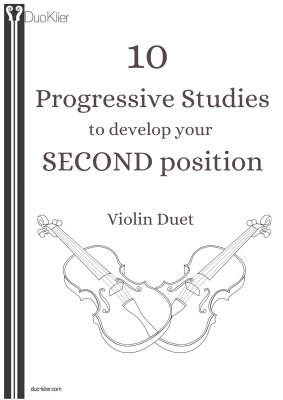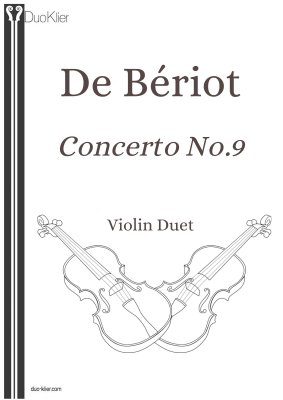Use the Discount code to get 15% off at checkout CODE: THANKYOU10K
Violin Methods
Violin Teacher's corner
The Violin Methods and books we recommend
Nowadays there are as many different violin books as different kinds of students: for very young children with colourful pictures, games, easy notation, etc.; for older children with standard notation and flashy CD backing tracks, and those more traditionally written for grown-ups.
Apart from age range, we have to know that pupils at the same age may have different interests and motivations, let’s find them out! We have to get to know each pupil before deciding on which book is more suitable for each one.
For those of you who studied violin with an old method like us (Mathieu Crickboom), we all remember the excitement of reaching the beautiful duets after hours of lonely practice…why this excitement has to happen only once in a while? Our advice is to select violin books with which you can play and make music together as much as possible from the beginning.
This is a short list with some of the books we recommend:
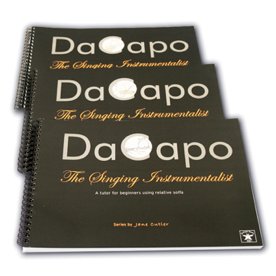
The Singing Instrumentalist
DaCapo Music Foundation
Ideal Age: 4+
The Singing Instrumentalist from The DaCapo Music Foundation: for Kodaly trained teachers, violin tutor for beginners using relative solfa.
“A set of 12 pentatonic songs presented in four sections, each designed to introduce a particular aspect of music-making, whilst taking on board instrumental skills. We invite teachers to use The Singing Violin as they see fit, mixing and matching sections and songs to give a balanced and enjoyable combination of singing, playing an accompaniment, playing the melody, rhythm work, composition and playing duets. “
Pentatonic songs are ideal to do in canon, to sing and play at the same time, and to invent ostinatos and accompaniments to play along with them. Every song is presented with the words plus a fun illustration to reinforce the learning, accompaniment and melody in stick notation and reduced stave. Suggested activities are given along the 4 sections: Sing words, sing solfa, clap the rhythm, sing and play accompaniment, play in canon, write the rhythms down, make up an introduction, play backwards, compose a rhythmic or melodic ostinato, play as a duet, transpose to a different “do”, transform and a long etc.
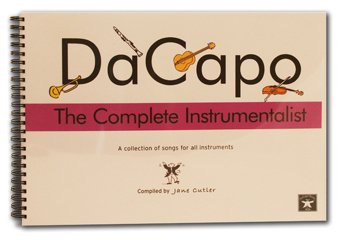
The Complete Instrumentalist 1 and 2
DaCapo Music Foundation
Ideal Age: 4+
Book 1 is a collection of pentatonic songs; it concentrates on the building of musicianship, is not clef specific and is therefore suitable for any instrument. It’s been written in reduced stave in order to develop the skill of hearing the music from the page. The songs are classified by their note range, using solfa symbols and handsigns to identify relative pitches.
Book 2 moves to diatonic songs. It is written in stick notation with an additional five line stave so that pupils or teachers can write out the music in whichever clef or key they choose to use. The songs are grouped by the number of notes in the piece and are mostly diatonic with a few pentatonic and modal pieces. It is designed to develop excellent musicianship.
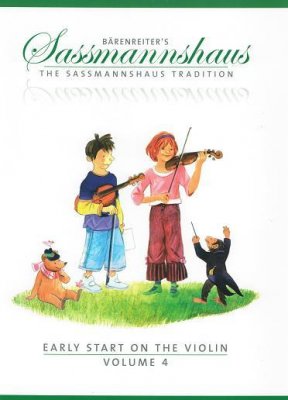
The Sassmannshaus Tradition - Early Start on the Violin
Kurt Sassmannshaus
Ideal Age: 4+
A violin method for children aged four and older in 4 Volumes. Some aspects to point out about this series:
- The child-friendly and age-appropriate text underlying the music enables children to perceive melodies as a whole and to understand their singable qualities.
- Songs and scales in different positions are easily explained and mastered within the first year. This is an important advantage over methods that confine children to the first position for many years.
- Note reading is emphasized from the first lesson - children are brought up to become proficient sight-readers and play in chamber music ensembles as early as possible.
- In contrast to other beginner methods, The Sassmannshaus Tradition progresses swiftly by introducing advanced techniques in rudimentary form, such as shifting and varied bow strokes.
- Ensemble playing is encouraged from the very beginning.
- The method is suitable for single instruction as well as for group and class lessons.
- The large print notes and text as well as many colorful illustrations are particularly child-friendly and very attractive to pre-school children and school children alike.
- The substantial volumes contain comprehensive material and carefully calibrated learning curves. They keep children curious and interested for many months and years.
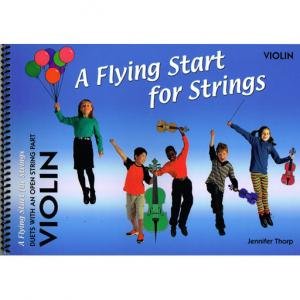
A Flying Start for Strings (violin + duet book)
Jennifer Thorp
Ideal Age: 4+
This elementary Violin tutor has been designed specially for young children working either in individual tuition or same-instrument groups.
"Starting with your first notes and techniques, building to melodies that span the full first position, this book is the ideal tutor system for the young. Each exercise is based on a well-known nursery rhyme or tune, helping all students to discover rhythm and music-reading with ease".
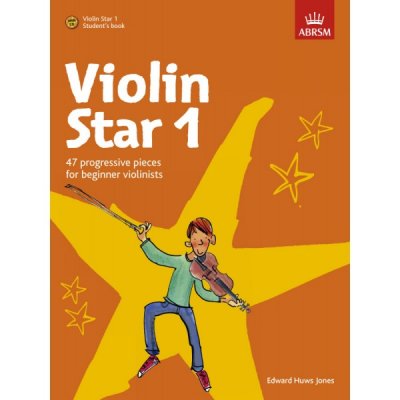
Violin Star
Edward Huws Jones
Ideal Age: 6+
3 volumes, pieces originally written for violin and piano and arranged to be accompanied with a second violin. Fun mix of styles with a CD containing the performance and play along tracks. Well known tunes, classics, folk, original pieces with extra activities and actions through the songs (singing, tapping, improvising, etc.).
- Book 1: (Beginner) 47 progressive pieces: Plucking and Bowing Pieces, crotchets and minims, ¾ time signature and dotted minims, crotchet and quavers, first finger patterns up to the 3rd finger.
- Book 2: (Beginner-Grade 1) 31 progressive pieces: slurs, dotted crotchet/quaver rhythms, fourth finger, D major scale and arpeggio (1 octave), second finger pattern, first and second finger patterns together, G major scale and arpeggio (two octaves), ties and hooked bowing, E natural minor, semiquavers, Grade 1 repertoire pieces.
- Book 3: (Grades 1-2) 28 progressive pieces: third finger pattern (A major), 6/8, fourth finger pattern (F major), fifth finger pattern (B flat major), minor keys, Grade 2 repertoire pieces.
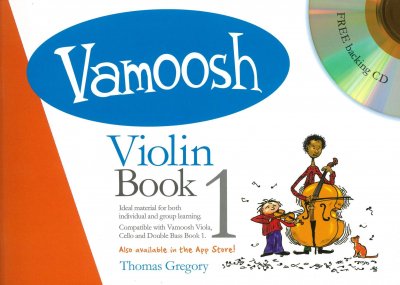
Vamoosh series
Thomas Gregory
Ideal Age: 6+
This delightful series in 3 volumes is ideal for both individual and group lessons. The engaging backing tracks and pieces in different styles written in a simple and clear format will make your students fly from beginner to Grade 3 standard.
- Book 1: (Beginner-Grade 1) Open strings songs, plucking and bowing, and first finger pattern are introduced gradually. Most of the pieces are singable, in the range of the octave which is great for Kodaly teachers too. Left hand fingers are introduced starting with all three on the string to make a good shape on the left hand.
- Book 2: (Grades 1-2) New finger patterns, slurs, scales and more complex rhythms are now introduced.
- Book 3: (Grades 2-3) It continues introducing new elements including 3rd position and shifts.

Fiddle Time Series
Kathy and David Blackwell
Ideal Age: 6+
Four books, pieces originally written for violin and piano and recently arranged to provide second violin accompaniments to all of the pieces. Fun mix of styles with a CD to play along with.
- Fiddle Time Starters (Beginner): a great beginner book for the budding violinist - 60 tunes, quizzes, games, songs, and listening activities. Fully compatible with Viola and Cello Time Starters, and suitable for individual and mixed group lessons.
- Fiddle Time Joggers (Grade 1): a first book of very easy pieces for violin with open string pieces and tunes using the finger pattern 0-1-23-4. There are well-known tunes and original pieces from rock to calypso using simple slurs and a few dynamics. Notice-boards introduce new notes and rhythms and there are easy duets to play.
- Fiddle Time Runners (Grade 2): a second book of easy pieces for violin using finger patterns 0-12-3-4 and 0-1-2-34. It includes traditional tunes and pieces and original material, plus plenty of duets.
- Fiddle Time Sprinters (Grade 3): pieces using the finger pattern 01-2-34 plus low 2nd fingers and high 3rd fingers. 2nd and 3rd position pieces with a range of bowing techniques. Original pieces and duets in different styles, plus well-known pieces using modes, chromatic and blues scales, and dominant 7ths.
• We can also mention: Essential Strings Method by Sheila M. Nelson, Vamoosh series by Thomas Gregory, Superstart Violin by Mary Cohen, Eta Cohen’s Violin Method in 4 volumes, Abracadabra and many others!
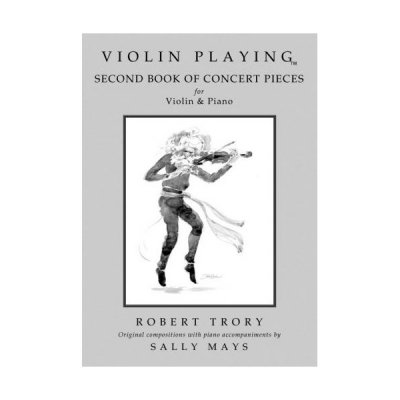
Violin Playing
Robert Trory
Ideal Age: Late starters/Adults
“A comprehensive and contemporary tutor in five books that guides the student from the very first notes through to an advanced level. It steadily builds the solid foundations required for a sound technique; it is thorough and is based on the best traditions of teaching the violin. It follows the format of scales, exercises and studies together with enjoyable and musical pieces and with a modern and attractive presentation. All the pieces are written or arranged for two violins so that music-making flows naturally and is easily accomplished. The playing of duets also promotes a confidence in the student and adds to the enjoyment of lessons”.
- Book 1 (initial grade): introduces finger pattern No 1, including all four fingers, elementary one-octave major scales and arpeggios, detached bowing, slurring and crossing strings.
- Book 2 (grades 1 and 2): introduces finger patterns No 2, 3 and 4, together with portato bowing, linked dotted bowing, extended scales, chromatics, minor scales, scales in broken thirds, elementary finger exercises, double stops and the general development of sound bowing.
- Book 3 (grades 3 and 4): introduces 3rd and 2nd positions, further development of scales & arpeggios and chromatics, together with martellato bowing and re-taking the bow.
- Book 4 (grades 5 to 7): introduces 4th, 5th and 6th positions, the development of bowing techniques: string crossing, staccato, spiccato. Further chromatics, left hand stretches and general facility.
- Book 5 (grades 7 and 8): is a selection of essential studies. Introduces playing in higher positions, tone production, advanced string crossing, ricochet bowing, up bow staccato and develops general facility. It leads on to the further study of the standard works of Kreutzer, Rode, Rode, Dont, Gavinies and Alard amongst others, and to the contemporary work of Simon Fisher.
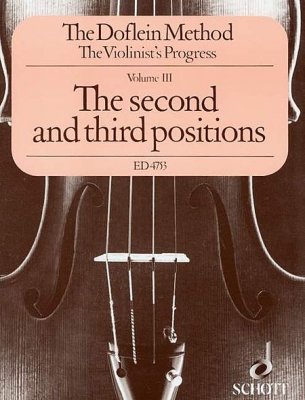
The Doflein Method
Late starters/Adults
Ideal Age: Late starters/Adults
A complete and progressive violin method in five volumes. Intended to produce well-rounded players, each book contains diagrams, musical examples, music theory practice, and duets for performance.
- Volume 1 The Beginning: is geared toward beginning players, addressing proper positioning of the instrument, string names, note values, etc.
- Volume 2 Development of Technique: remains in first position, dealing with major and minor keys, slower tempos, bowing techniques like martele, dotted rhythms, basic double-stops, canons, and more.
- Volume 3 The Second and Third Positions: addresses the demands of shifting into the second and third positions by way of short pieces and exercises, as well as introducing trills, harmonics, further reinforcement of minor keys, and half position.
- Volume 4 Further Technique in Bowing and Fingering: more advanced exercises in bowing and fingering chiefly in the first position.
- Volume 5 The Higher Positions: introduces the 4th through 10th positions, while revisiting the lower positions and how they interact with the higher ones. More short pieces, exercises, and duets are included.
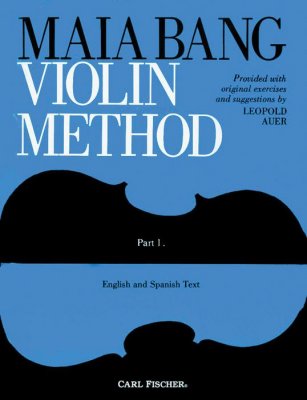
Maia Bang’s Violin Method
Maia Bang
Ideal Age: Late starters/Adults
A six volume series that covers every phase of violin teaching and playing, ranging from the rudimentary aspects of learning to play to the most sophisticated artistic realizations. Inspired by violin pedagogue Professor Leopold Auer, this publication provides progressive technical materials mixed with melodious pieces designed to interest the student player and expose them to pleasing musical impressions from the start. It includes scales, etudes, songs, bowing exercises, etc. A teacher's part underneath the pupil's part is also provided for harmonic training.
- Part 1: Elementary Rudiments
- Part 2: More Advanced Studies
- Part 3: Third and Second Positions
- Part 4: Fourth and Fifth Positions
- Part 5: Sixth and Seventh Positions
- Part 6: Higher Art of Bowing
You can download volumes 1 to 5 here.
• Other Historic Methods: Alard, Mazas, De Beriot, Laoureux, Wohlfahrt Op.38, F. David, Joachim, Kuchler, Ries, Crickboom, Spohr, etc.
• More contemporary ones: Strictly Strings, All for Strings, A Tune a Day, Essential Elements for Strings, S. Applebaum, etc.

